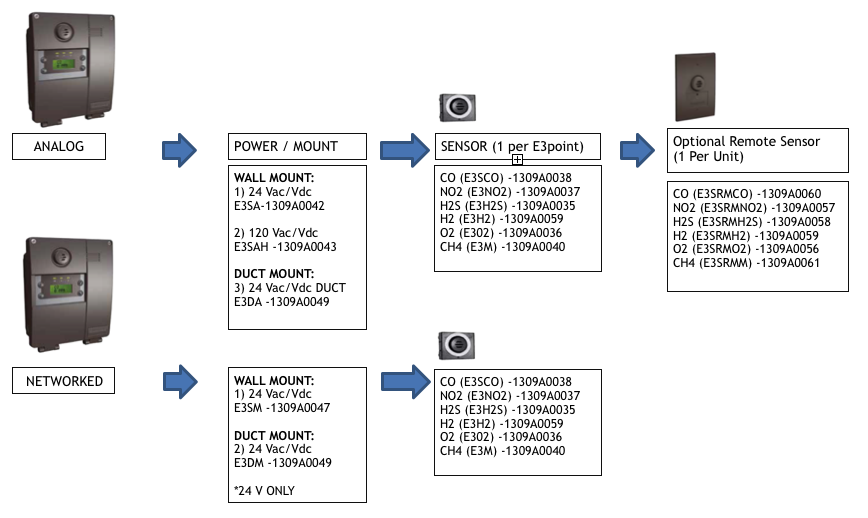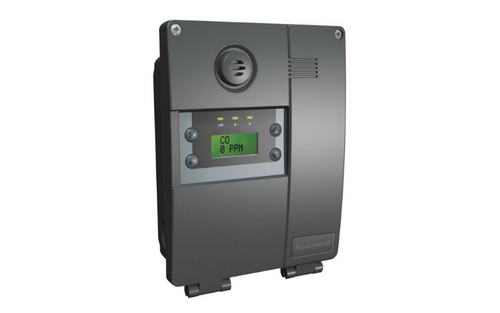Automate your Gas Detection Process with Honeywell's E3Point Gas Detector
The Honeywell E3Point Gas Detector is designed to help your team work smarter by automating the gas detection process. It uses advanced technology to increase the reach of your gas detectors while maintaining the efficacy of your equipment. It can even help you save money on your utilities by regulating your HVAC system and utilities. These products work with all different types of gas detection systems. Use this guide to find the right monitor for your operations.
The E3Point Gas Detector: Benefits and Features
Honeywell has developed one of the most advanced and intelligent gas detection systems in the industry. Their E3Point technology can detect a wide range of toxic and combustible gases, including CO, NO2, O2, H2, H2S, CH4 and C3H8. You can use it as a single- or dual-gas monitor using a remote sensor for fast configurations. The device works with both analog and digital networked systems, including your existing gas detection equipment.
You can connect it to your building automation system or a BACnet or Modbus network. The system can even help you save money on utilities. It uses Demand Control Ventilation, which connects to your building control system to increase energy efficiency. The device can help regulate fan life and optimize your HVAC resources to help your business go green.
These products are ready to go out of the box. The sensors are pre-calibrated for faster implementation. The system also uses Honeywell’s patented Reflex technology, which regularly bounces electrical signals into the sensor and serves as a bump test to make sure your equipment is working properly.
Selecting the Right Honeywell Gas Monitor: Analog vs. Networked
Honeywell offers a range of intelligent fixed gas detectors. Use this product map/flowchart to select the right monitor for your workspace.
 First, you need to choose between an analog or networked gas detection system. The analog standalone units are more common and have access to a remote sensor. The networked units cannot use remote sensor. These units are typically daisy chained together and used in conjunction with an existing PLC system or some sort of controller that receives data.
First, you need to choose between an analog or networked gas detection system. The analog standalone units are more common and have access to a remote sensor. The networked units cannot use remote sensor. These units are typically daisy chained together and used in conjunction with an existing PLC system or some sort of controller that receives data.
After deciding on analog vs. networked, you then select between a wall or duct mount. The chart will then ask you to select a sensor based on your target gas or substance, including CO, NO2, O2, H2, H2S, and CH4. You can choose one type of sensor per analog gas system, whereas multiple sensors can be added for the networked system. Analog systems give the option of adding a remote sensor (1 per unit), which can detect another target gas.
Calibration and Installation
The Honeywell gas detectors are made for quick installation. Every device features a user-friendly menu with instructions for wiring the monitor to your existing infrastructure. The E3Point comes pre-calibrated depending on your target gas, however, you may need help setting up this equipment if you’ve never used this technology.
PK Safety offers in-house gas monitor calibration services. Place an order on our website and we will make sure the device is ready to use as soon as it arrives. Contact our service center if you are having trouble with your gas detection equipment. It’s always better to call a professional than to attempt to fix this equipment yourself.
Keep this information in mind as you consider adding the Honeywell E3Point fixed gas detector to your operations.
Recent Posts
-
Customizing Gas Detectors: Tailoring Solutions to Fit Your Unique Requirements
In today’s diverse industrial landscape, a one-size-fits-all approach to safety simply doesn’t cu …Jul 3rd 2024 -
10 Ways to Prevent Wildfires
You can prevent wildfires by extinguishing flames before you leave the worksite. Avoid practicing …Jul 1st 2024 -
ANSI/ISEA 138 Safety Gloves: Ensuring Hand Protection
The human hand is an anatomical masterpiece and arguably the greatest tool attached to our bodies …Jun 25th 2024





